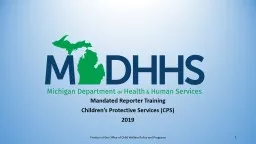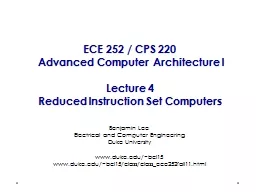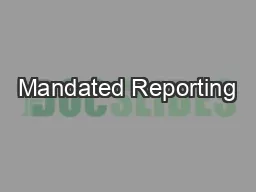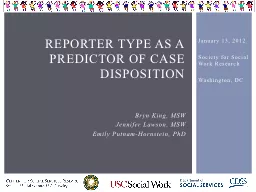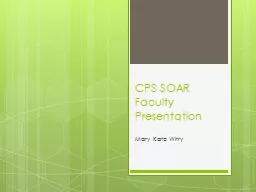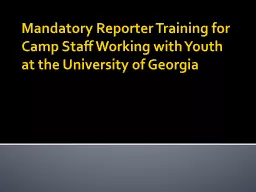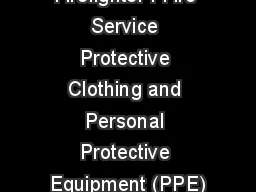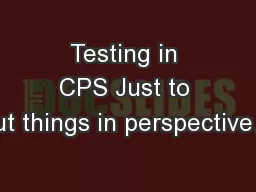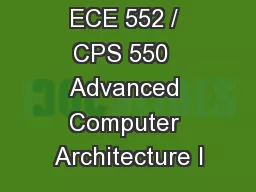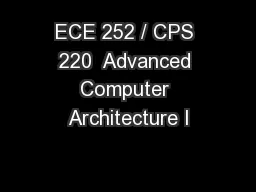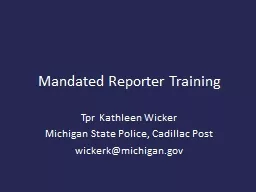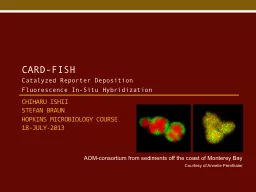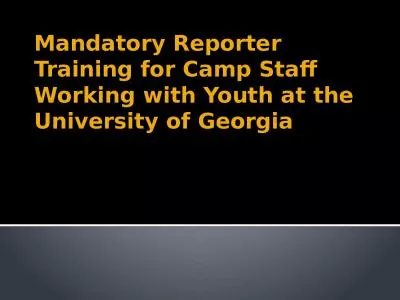PPT-Mandated Reporter Training Children’s Protective Services (CPS)
Author : briana-ranney | Published Date : 2019-11-04
Mandated Reporter Training Childrens Protective Services CPS 2019 Product of the Office of Child Welfare Policy and Programs 1 Name of Local Organization Identifying
Presentation Embed Code
Download Presentation
Download Presentation The PPT/PDF document "Mandated Reporter Training Children’s ..." is the property of its rightful owner. Permission is granted to download and print the materials on this website for personal, non-commercial use only, and to display it on your personal computer provided you do not modify the materials and that you retain all copyright notices contained in the materials. By downloading content from our website, you accept the terms of this agreement.
Mandated Reporter Training Children’s Protective Services (CPS): Transcript
Download Rules Of Document
"Mandated Reporter Training Children’s Protective Services (CPS)"The content belongs to its owner. You may download and print it for personal use, without modification, and keep all copyright notices. By downloading, you agree to these terms.
Related Documents

